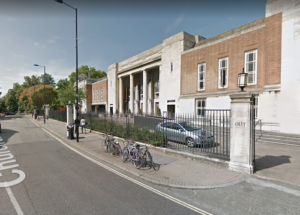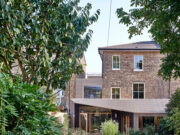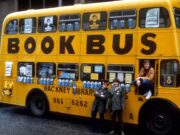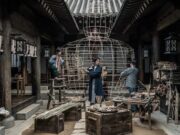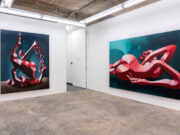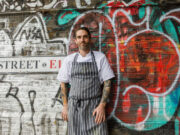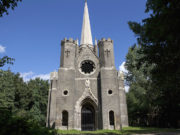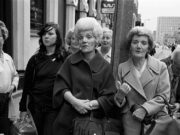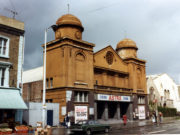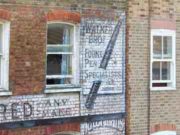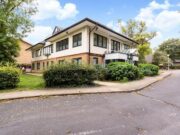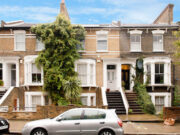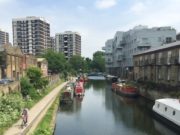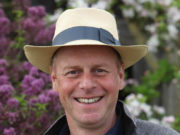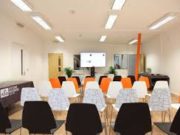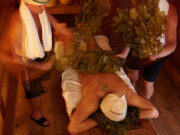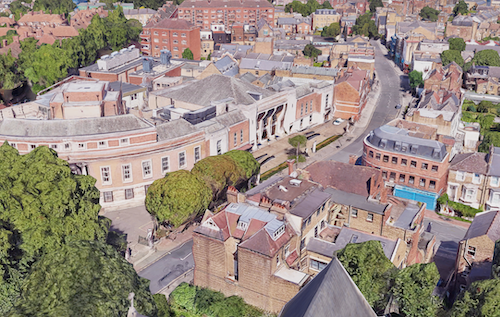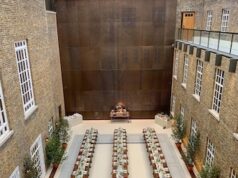Stoke Newington’s changing streetscape in the 1930s captured by the local shopkeeper Alexander Guttridge.
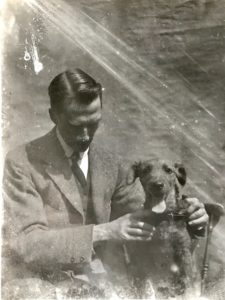
By Amir Dotan
Alexander Guttridge (1877-1977) was born on Barn Street in Stoke Newington. Working with his brother Fred and sister Eva, he ran two shops locally on Church Street, a stationary/post office at no.170 and a tobacco shop at no.150. A keen photographer, Alexander captured images of Stoke Newington’s changing streetscape in the 1930s. He photographed both small houses in a ‘Slum Clearance Area’ that were replaced with modern blocks of flats, and grand old houses that made way for a new Town Hall. ‘The Guttridge Collection’ serves as an important documentation of the changes Stoke Newington and London as a whole experienced in the 1930s.
View from St Mary’s
An early view of Stoke Newington from the early 1930s which shows Church Row on the left and the original Rose and Crown pub which was located opposite the current spot. The pub was demolished and rebuilt in 1933 when Church Street/Albion Road was widened.
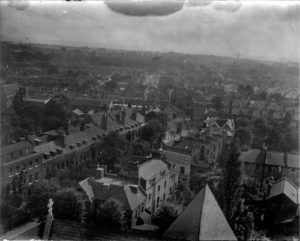
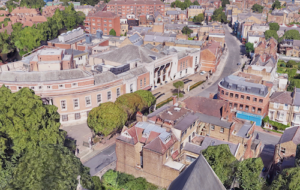
Barn Street
This old street off Stoke Newington Church Street once consisted of very small old houses that were inhabited
by the poor in an otherwise well-to-do Victorian suburb. Alexander spent his childhood there and very likely decided to document the street before the houses were demolished to make way for new modern flats (Denman House) in the mid-1930s. The street today, which was truncated when Denman House was built, consists of new houses and St Mary School.
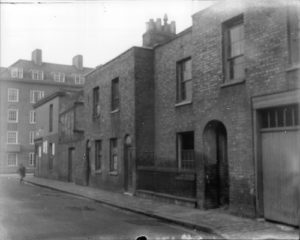
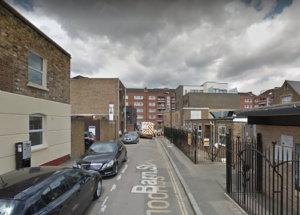
Guttridge Shop
One of the family shops was at no. 170, where the Church Street Post Office stands today. At some point the family moved from Barn Street, where Alexander was born in 1877, and lived above the shop.
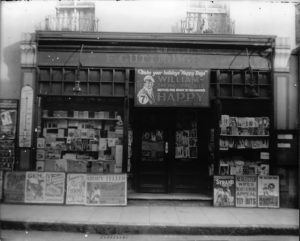
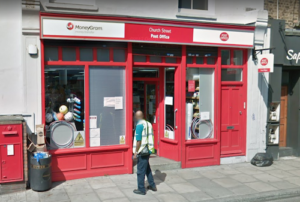
Church Street and the R101 airship
Alexander’s brother, Frederick, standing proudly outside the family shop at no.170. This photo captures the R101 airship (behind the church spire). It was completed in 1929 and at 223m long, it was the world’s largest flying craft at the time. It crashed in France on Oct 5th 1930 killing 48 of the 54 passengers and crew.
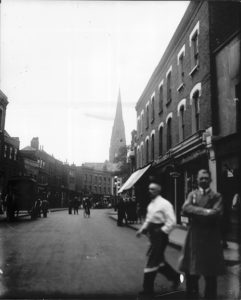
Church Row
Church Row was the name of 9 grand houses that were built on Church St in 1695-1700 on the site of the Tudor Manor House. For centuries, the row was home to Stoke Newington’s most affluent residents but by the mid- 1930s Church Row was demolished, as the fairly wealthy residents that once lived there moved away, and plans for a new Town Hall in the centre of the borough were put in place in 1934. Church Row couldn’t have been more different than nearby Barn St, yet both were completely transformed for different reasons during that period.

